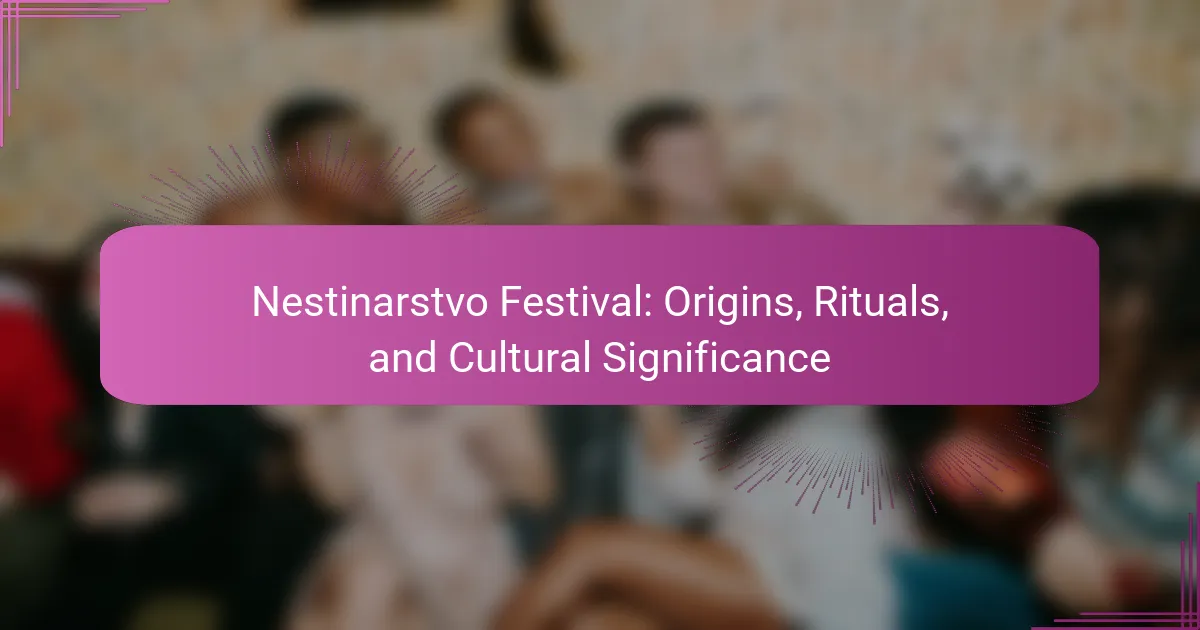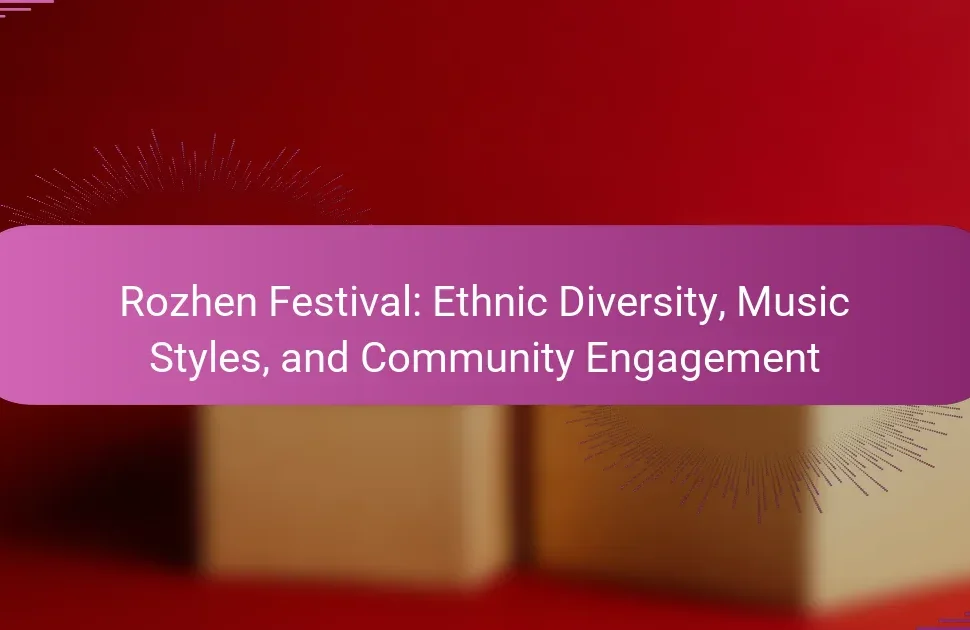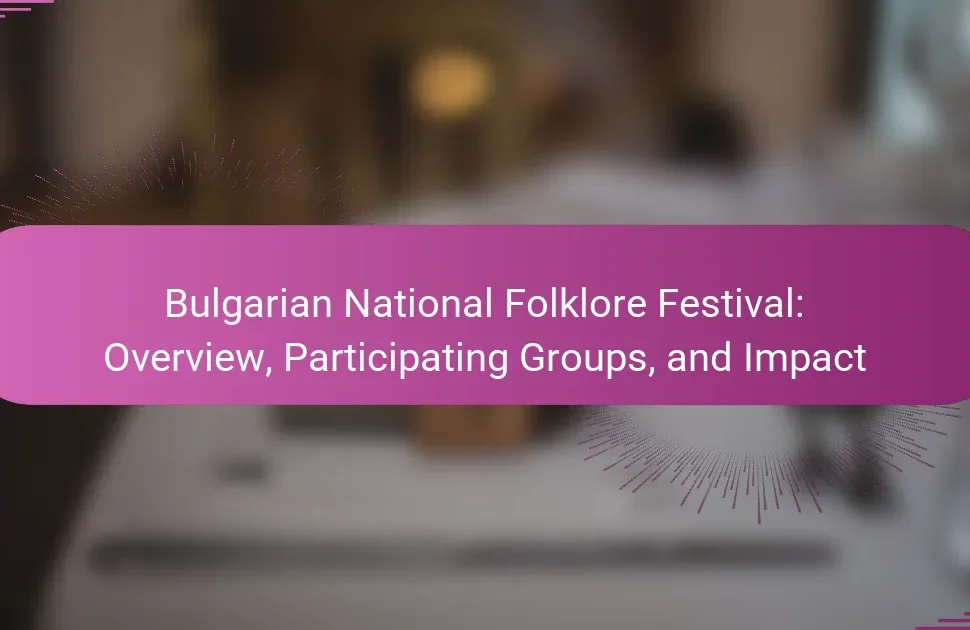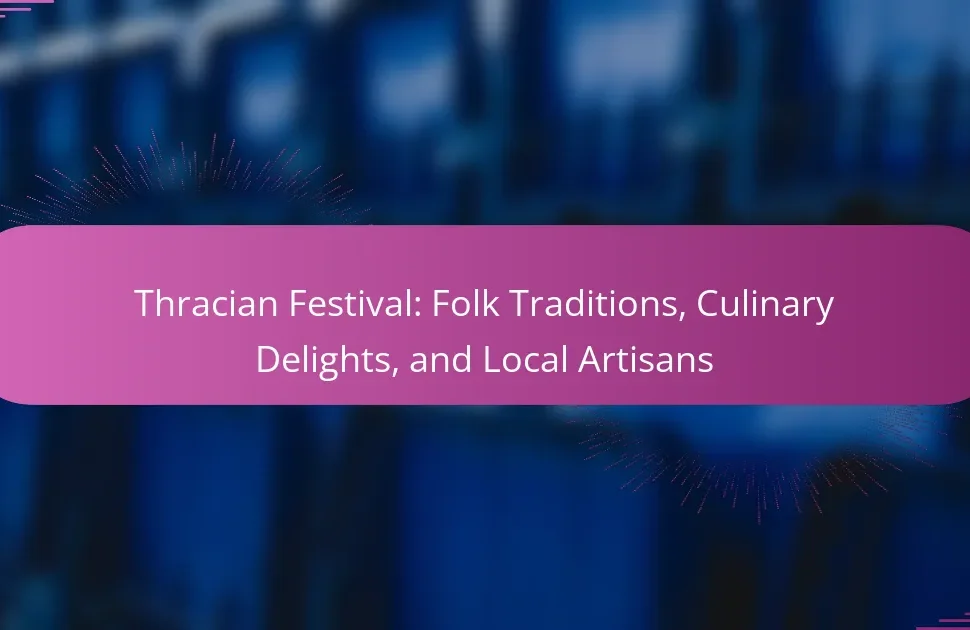The Nestinarstvo Festival is a captivating cultural event in Bulgaria that symbolizes purification and spiritual connection through fire-walking. This article explores its ancient Thracian origins, unique rituals including trance-like fire dancing, and the festival’s significance in preserving Bulgarian heritage. Additionally, it addresses contemporary challenges in cultural preservation and offers insights for enhancing the festival experience.
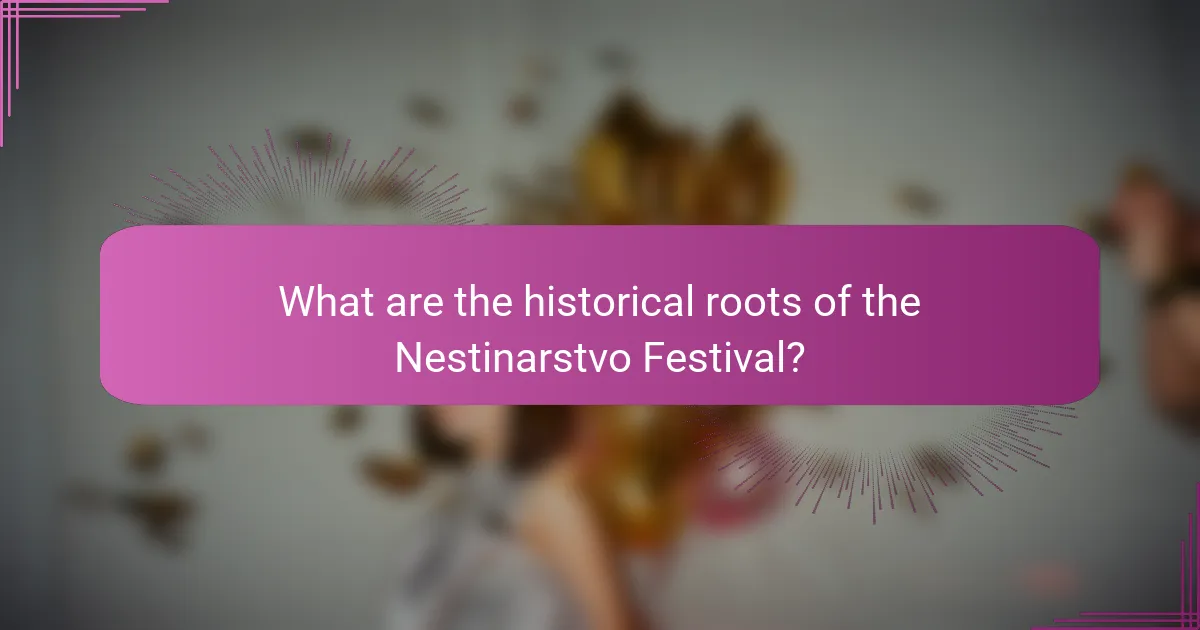
What are the historical roots of the Nestinarstvo Festival?
The Nestinarstvo Festival has historical roots in ancient Thracian rituals. It combines elements of pagan worship and Christian traditions, reflecting the region’s cultural evolution. The festival celebrates the connection between the spiritual and physical worlds through fire-walking and dance, symbolizing purification and healing. Over time, it has become a vital cultural event in Bulgaria, preserving folklore and community identity.
How did the festival evolve over time?
The Nestinarstvo Festival evolved from ancient pagan rituals into a recognized cultural event. Initially, it centered on fire-walking as a form of spiritual purification and connection to the divine. Over time, the festival incorporated local traditions, music, and dance, enhancing its community significance. Today, it serves as a celebration of cultural heritage, attracting visitors and fostering regional pride. The unique attribute of the festival is its combination of religious and folkloric elements, which differentiates it from other cultural events.
Which cultural influences shaped its development?
The Nestinarstvo Festival was shaped by a blend of Thracian, Byzantine, and Christian influences. These cultural elements contributed to the unique rituals and practices observed during the festival. Thracian roots emphasize the connection to nature and ancestral worship, while Byzantine traditions introduce elements of spirituality and community cohesion. Christian influences further enrich the festival, highlighting themes of faith and redemption. Together, these influences create a vibrant tapestry that reflects the region’s historical and cultural identity.
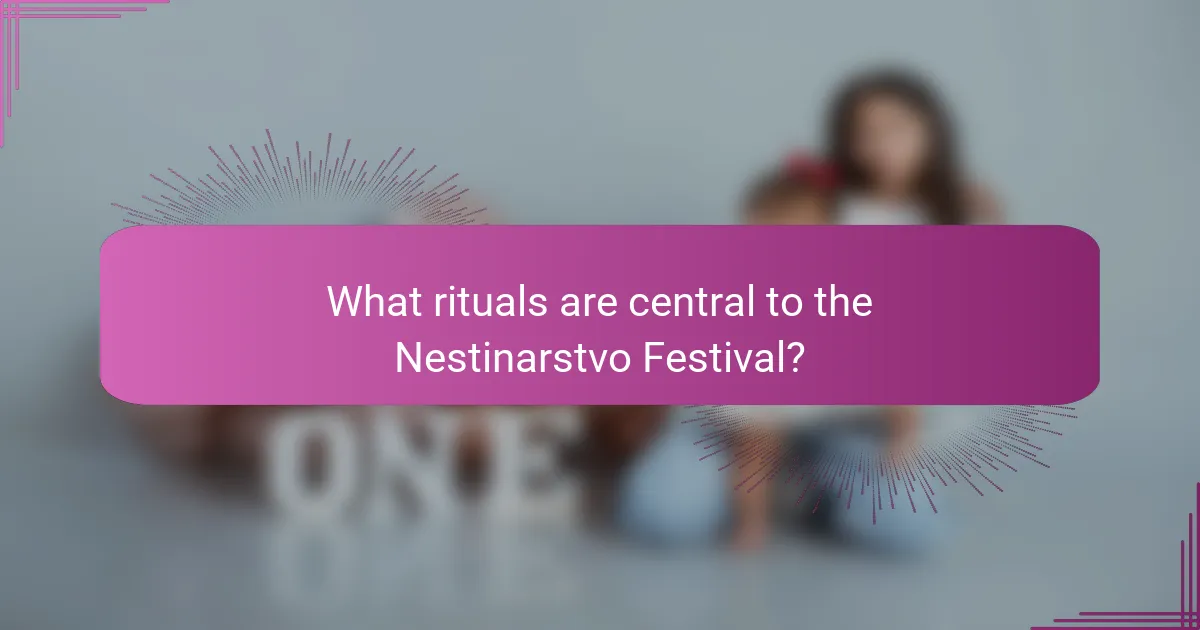
What rituals are central to the Nestinarstvo Festival?
The central rituals of the Nestinarstvo Festival include fire dancing, music, and traditional prayers. Participants, known as Nestinari, engage in trance-like states while dancing barefoot on hot coals, symbolizing a connection to the divine. This unique practice, rooted in ancient beliefs, showcases the festival’s cultural significance in preserving Bulgarian heritage. The event also features vibrant music and communal gatherings, enhancing the sense of community and continuity among participants.
How do fire-walking practices manifest during the festival?
Fire-walking practices during the Nestinarstvo Festival embody spiritual and cultural rituals. Participants walk barefoot over hot coals, symbolizing purification and connection to the divine. This practice is rooted in ancient beliefs, demonstrating faith and communal identity. The festival celebrates the transition from life to death, reinforcing its cultural significance through these dramatic rituals.
What roles do music and dance play in the celebrations?
Music and dance are central to the Nestinarstvo Festival, enhancing its spiritual and communal aspects. They create an atmosphere of celebration and connection among participants. Traditional music accompanies the rituals, emphasizing the festival’s historical roots. Dance serves as a medium for expressing devotion and cultural identity, allowing participants to engage physically and emotionally with the experience. The rhythmic movements and melodies foster a sense of unity, making the festival a profound cultural event.
Which symbols and artifacts are significant in the rituals?
The significant symbols and artifacts in the Nestinarstvo Festival rituals include fire, icons, and traditional costumes. Fire represents purification and connection to the divine. Icons, especially of saints, serve as focal points for prayer and devotion. Traditional costumes embody cultural identity and heritage. Each element plays a vital role in expressing the festival’s spiritual and communal significance.
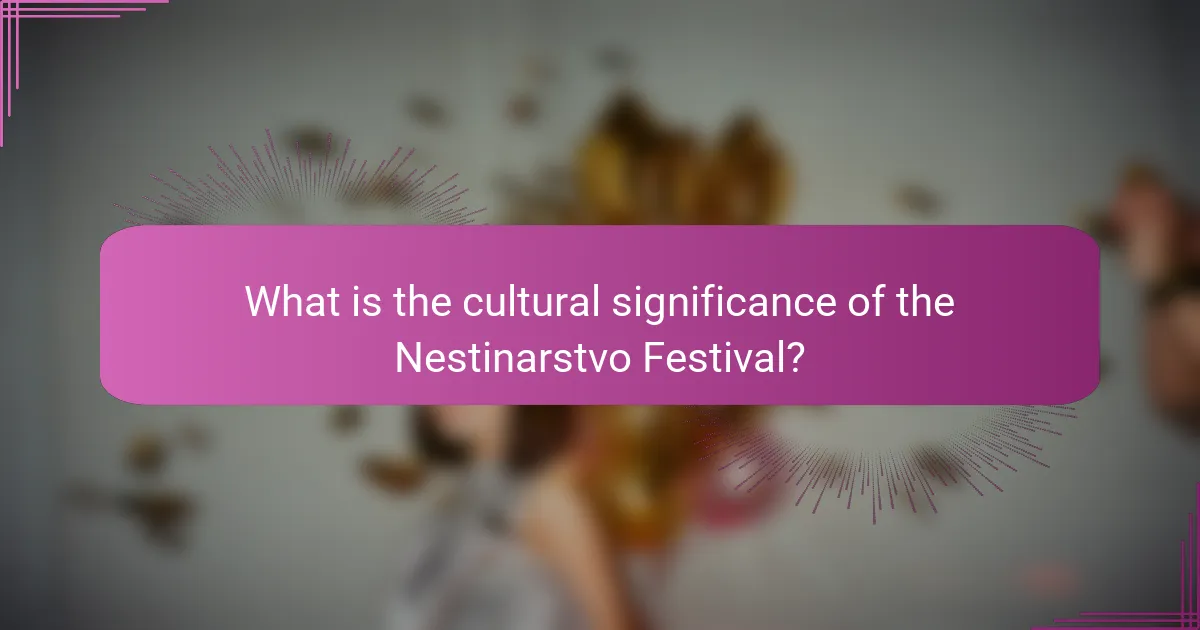
What is the cultural significance of the Nestinarstvo Festival?
The Nestinarstvo Festival holds deep cultural significance as it embodies ancient traditions and spiritual beliefs. This Bulgarian fire-dancing ritual connects participants with their ancestors, showcasing a unique blend of pagan and Christian elements. The festival fosters community bonds and preserves cultural heritage, attracting both locals and tourists. Nestinarstvo’s vibrant rituals and symbolic acts serve as a testament to the resilience of local customs in the face of modernization.
How does the festival reflect local beliefs and traditions?
The Nestinarstvo Festival reflects local beliefs and traditions through its unique fire-walking rituals and offerings to saints. These practices symbolize the community’s connection to spirituality and ancestral heritage. Participants believe that walking on fire purifies the soul and brings blessings, showcasing deep-rooted faith and cultural identity. The festival serves as a vibrant expression of local customs, uniting generations in shared beliefs and communal celebration.
What impact does the festival have on community identity?
The Nestinarstvo Festival significantly enhances community identity by fostering cultural pride and unity. This festival, rooted in ancient rituals, serves as a platform for collective expression and heritage preservation. Participants engage in traditional practices, reinforcing social bonds and shared values. The festival also attracts visitors, promoting local culture and economy, further solidifying community ties.
In what ways does the festival contribute to cultural preservation?
The Nestinarstvo Festival contributes to cultural preservation by maintaining ancient rituals and fostering community identity. It showcases traditional music, dance, and fire-walking, which are integral to the local heritage. This festival serves as a living expression of cultural history, passed down through generations. Additionally, it attracts tourism, promoting awareness and appreciation of the culture. Through these activities, the festival reinforces social cohesion and strengthens the community’s connection to its roots.
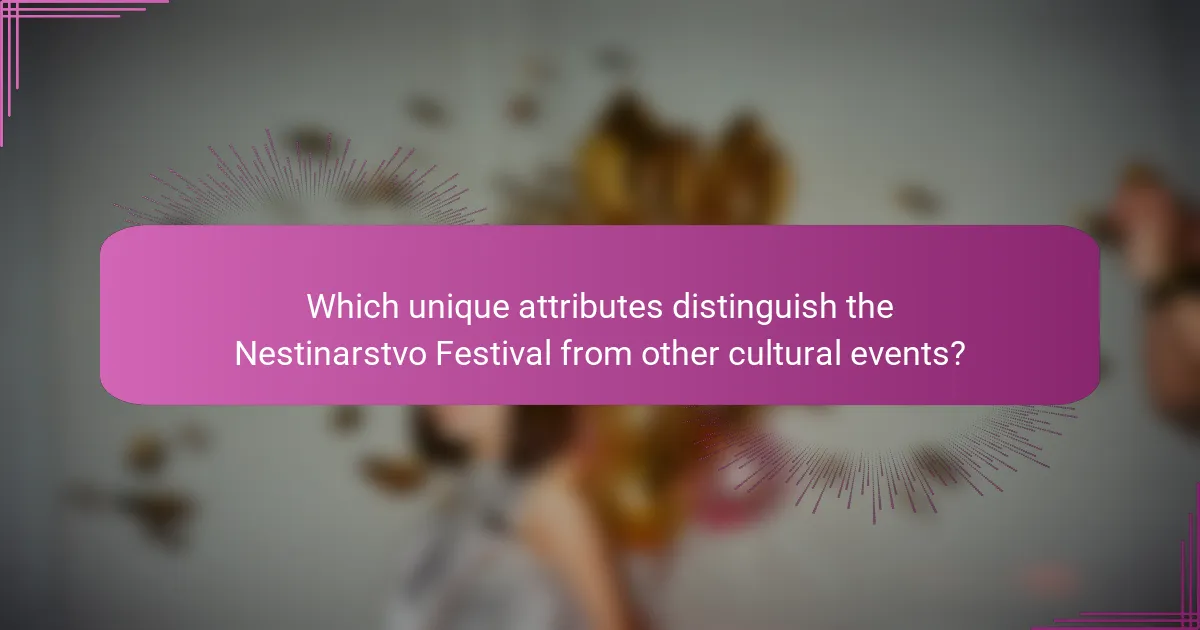
Which unique attributes distinguish the Nestinarstvo Festival from other cultural events?
The Nestinarstvo Festival is distinguished by its unique blend of fire dancing, spiritual rituals, and deep-rooted cultural heritage. This festival, held in Bulgaria, features participants dancing barefoot on hot coals, which symbolizes purification and connection to the divine. Unlike other cultural events, it emphasizes a strong spiritual element, reflecting the community’s historical beliefs and practices. The festival’s origins trace back to ancient Thracian traditions, making it a rare cultural phenomenon that showcases a living connection to ancestral customs.
What specific regional variations exist within the festival’s practices?
Regional variations within the Nestinarstvo Festival reflect local customs and traditions. In some areas, fire-walking rituals occur at different times of the year, while others incorporate unique music styles or dance forms. For example, the festival in the village of Kalofer emphasizes traditional folk costumes, whereas in the village of Bansko, the focus is on specific spiritual practices linked to local legends. Additionally, some regions include distinct offerings to the saints, showcasing diverse cultural significance across the festival’s celebrations.
How do participants’ motivations differ across communities?
Participants’ motivations at the Nestinarstvo Festival vary significantly across communities. Some are drawn by cultural preservation, while others seek spiritual experiences or community bonding.
Cultural enthusiasts often view the festival as a way to maintain traditions, connecting with heritage and identity. Spiritual seekers may participate for personal enlightenment or healing, valuing the rituals’ mystical aspects. Community members emphasize social cohesion, using the event to strengthen local ties.
These diverse motivations highlight the festival’s multifaceted role in society, serving as a platform for cultural expression, personal growth, and communal unity.
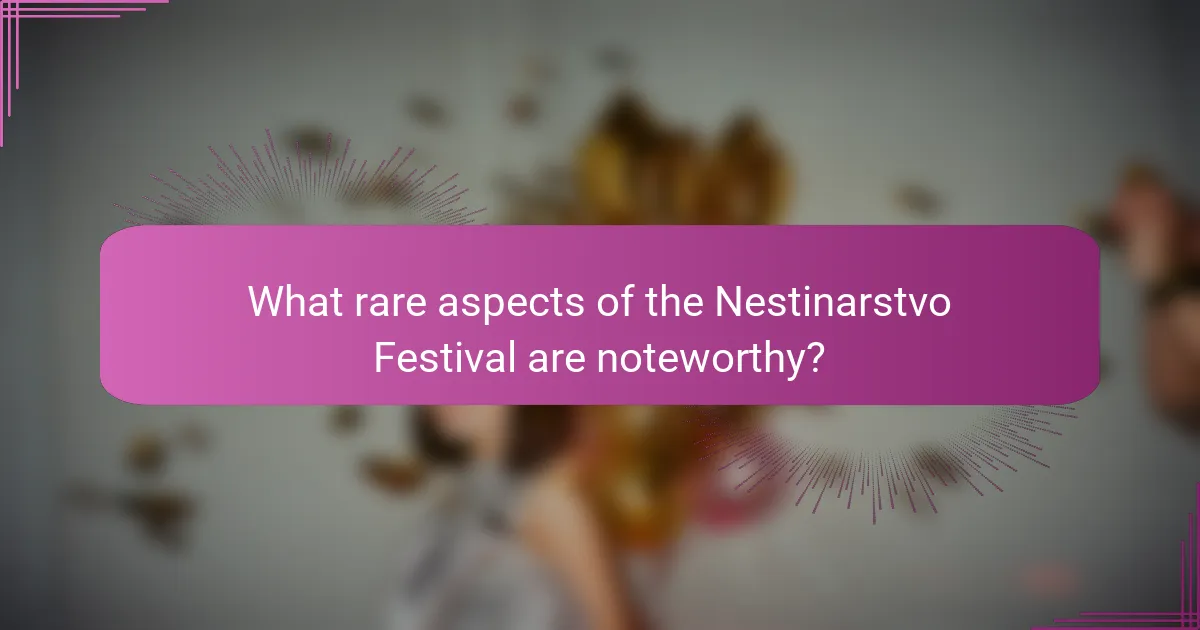
What rare aspects of the Nestinarstvo Festival are noteworthy?
The Nestinarstvo Festival features rare aspects such as fire-walking rituals, which symbolize purification and spiritual connection. The festival occurs in remote Bulgarian villages, enhancing its cultural authenticity. Unique to this event is the integration of ancient Thracian traditions, showcasing a blend of pagan and Christian elements. Additionally, the festival is celebrated only during specific dates, linked to the feast of Saints Constantine and Helena, making it a rare cultural experience.
Which exceptional stories or legends are associated with the festival?
The Nestinarstvo Festival is rich with exceptional stories and legends that highlight its cultural significance. One prominent legend involves the fire-walking ritual, believed to be a spiritual connection to the divine. Participants, known as Nestinari, enter a trance state, guided by the music of traditional instruments. Another story tells of a miraculous healing attributed to the festival, where a sick villager was cured after walking on embers. These narratives reinforce the festival’s role in community bonding and spiritual renewal, showcasing its unique attributes and deep-rooted traditions.
How do certain rituals vary in frequency or significance among participants?
The frequency and significance of rituals at the Nestinarstvo Festival vary among participants based on personal beliefs and cultural backgrounds. Some engage deeply, viewing the fire-dancing as a spiritual connection, while others may participate for community bonding or entertainment. The festival’s roots in ancient traditions influence these varying levels of engagement, with some individuals focusing on the ritual’s historical significance and others prioritizing the social aspects.
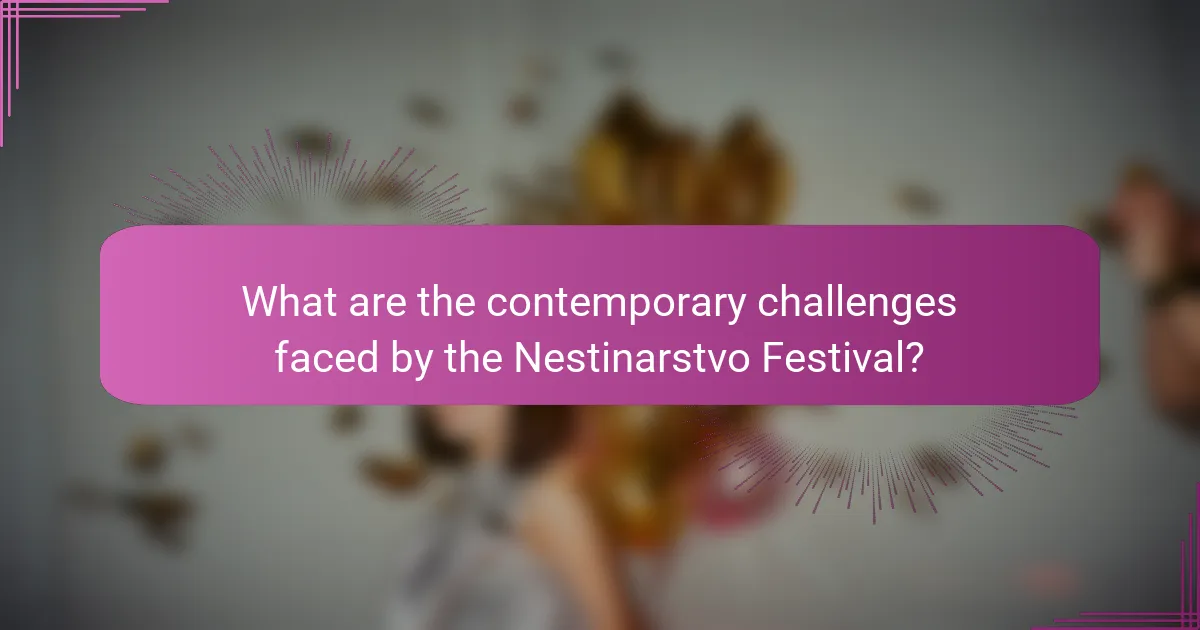
What are the contemporary challenges faced by the Nestinarstvo Festival?
The Nestinarstvo Festival faces several contemporary challenges, including cultural preservation, commercialization, and environmental impacts. Cultural preservation is critical as younger generations show less interest in traditional practices. Commercialization threatens the authenticity of rituals as tourism increases. Environmental impacts arise from large crowds, affecting local ecosystems.
How is the festival adapting to modern societal changes?
The Nestinarstvo Festival is adapting to modern societal changes by integrating contemporary values while preserving its traditional roots. This includes embracing inclusivity and promoting cultural heritage through educational initiatives. The festival now features workshops and performances that attract diverse audiences, enhancing community engagement. As a result, the festival’s cultural significance is being revitalized, ensuring its relevance in today’s society.
What issues arise regarding cultural appropriation and commercialization?
Cultural appropriation and commercialization of the Nestinarstvo Festival lead to conflicts over authenticity and ownership. These issues arise when external entities exploit the festival’s cultural significance for profit, often diluting its original meanings. The festival, rooted in Bulgarian tradition, risks losing its unique attributes as it becomes commodified. This commercialization can overshadow the festival’s spiritual rituals, leading to a disconnection from its cultural origins.

How can participants enhance their experience at the Nestinarstvo Festival?
Participants can enhance their experience at the Nestinarstvo Festival by engaging actively in rituals, learning about the cultural significance, and connecting with locals. Immersing in the traditional fire-dancing ceremony offers a unique perspective on this ancient practice. Attending workshops can deepen understanding of the festival’s origins and rituals. Sampling local cuisine adds to the cultural experience. Lastly, participating in community events fosters connections and enriches the overall festival atmosphere.
What best practices should attendees follow for safety and respect?
Attendees should prioritize safety and respect by following guidelines that enhance the experience. First, maintain a respectful attitude towards cultural practices. Second, adhere to safety protocols during rituals, such as keeping a safe distance from fire. Third, avoid disruptive behavior to honor the event’s significance. Lastly, engage with locals positively, fostering a respectful exchange.
Which tips can help visitors engage meaningfully with the festival’s culture?
To engage meaningfully with the Nestinarstvo Festival’s culture, visitors should participate in rituals, learn about the festival’s history, and interact with local artisans. Immersing in the fire-dancing practices offers firsthand experience of the festival’s spiritual significance. Attending workshops can deepen understanding of traditional crafts and customs. Engaging with local community members fosters connections and enriches cultural appreciation.
